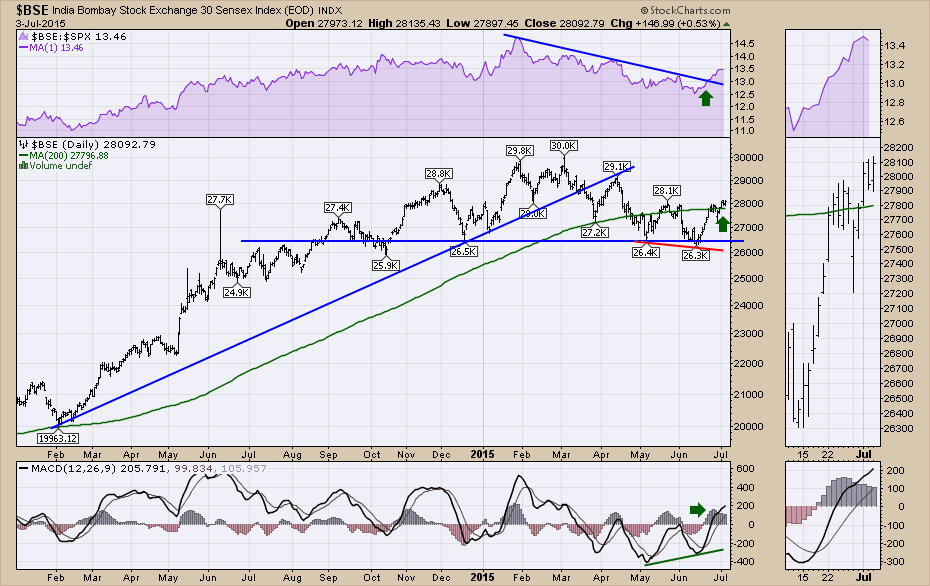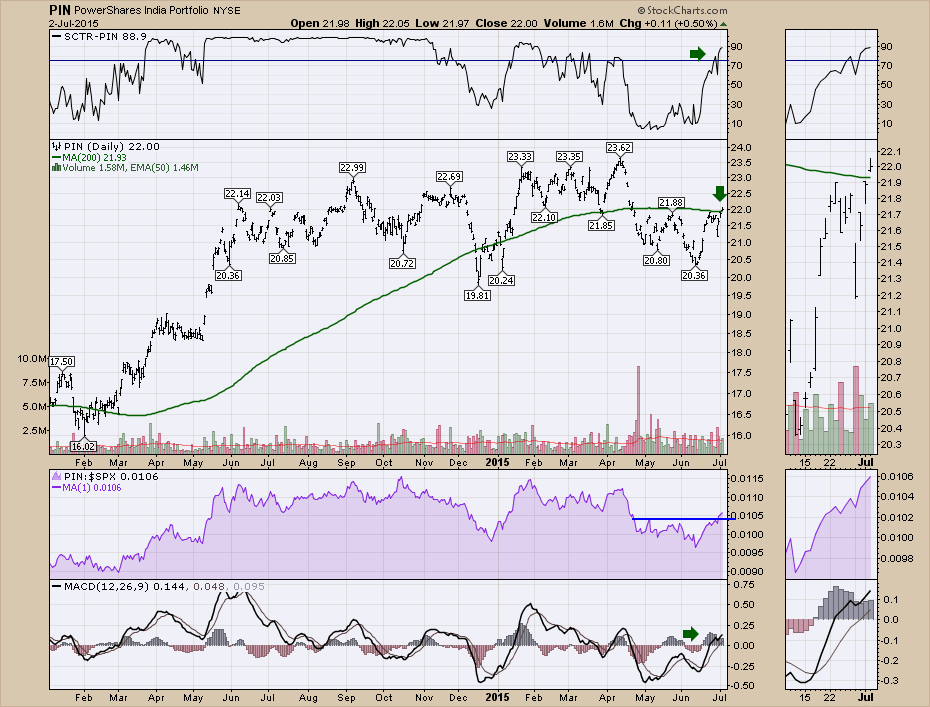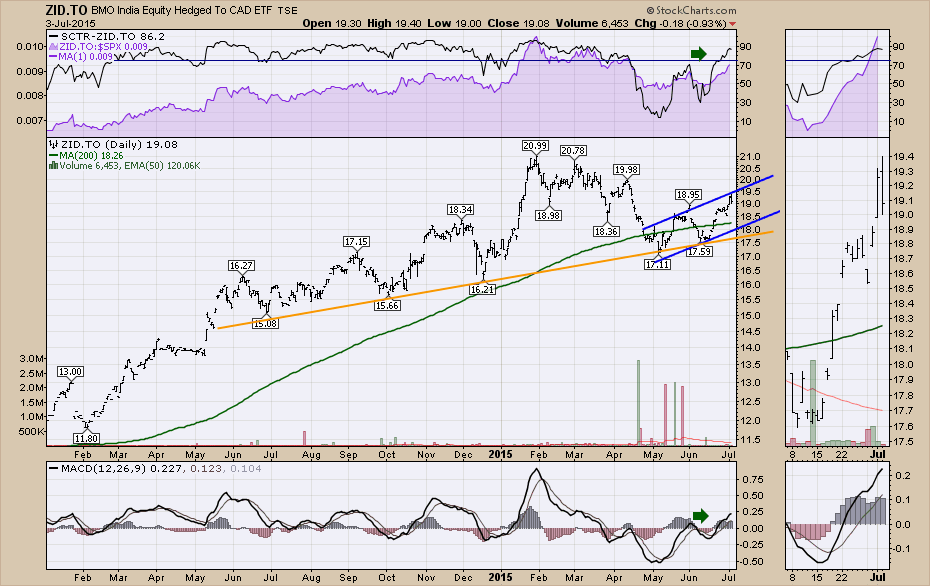The news from the Shanghai market has been expected for while. Parabolic rises seldom descend in a controlled manner. Lately, this dominates the Asian news feeds about markets. However, some of their neighbours are doing quite well. South Korea is doing well, but India is doing a little better currently. India has the world's best numbers from a demographic perspective so I'll spend the article today focused on India.
Let's look at the market from India through the Bombay Stock Exchange ($BSE). Starting at the top, shown in purple, is the relative strength line of the $BSE compared to the $SPX. India was outperforming the S&P 500 ($SPX) for almost a year. Recently, the Indian market underperformed the SP500 as shown by the blue line. However, in mid June the RS broke above this down sloping trend line and also exceeded the previous high of June 1. Moving on to price, after climbing 50% in one year, India has rolled over (since March 1) and pulled back to support. The pullback was a little over 10% off the highs. However, the support level has at least 6 tests on it with 2 from below in July of last year. The more touches a level has, the more important the level. After dipping below for a day, the market quickly rallied since mid June. It took a week to get through the 200 DMA and closed above the previous resistance area at 2 month highs. Nice.
Staying on Chart 1, I have also highlighted a small positive divergence on the MACD where the price put in a lower low, but the MACD put in a higher low. The MACD has also taken out the previous two highs and is accelerating higher.
So how can one invest in India? I have a ChartList of the top volume ETF's rather than all the ETF's. I spent a bit of time creating it with a one line comment describing the theme of each ETF. By controlling the volume it keeps me focused on the best liquidity. From that ChartList, here are 5 with India in the title.
- PowerShares Portfolio India (PIN) has an SCTR ranking of 88.9%
- iShares MSCI India (INDA) has an SCTR ranking of 85.6%
- iShares S&P NIfty Fifty (INDY) has a ranking of 81.9%
- WisdomTree India Earnings Fund (EPI) has an SCTR ranking of 75.0%
- Market Vector India Small Cap Index (SCIF) has a ranking of 59.5%
A look at the top one. Here is PIN. The chart looks a little 'gappy' because this ETF reflects trading in a market that is closed when we are open due to time zones. However, the average volume is 1.46 M/day. Now that we are looking at something investable rather than an index, we can see the SCTR ranking. I like the SCTR for entries better than exits, so this looks excellent if you like to buy breakouts.
For Canadians, we don't have the luxury of trading with huge volumes in most of our ETF's. So I found two that trade in Canada and I've listed them below.
- BMO India Equity Hedged to CAD ETF (ZID.TO) has an SCTR ranking of 86.2%
- iShares S&P CNX India Nifty India Index Fund (XID.TO) has an SCTR ranking of 84.1%
Both of these have low volumes. Looking at the top one based on the SCTR, here is the BMO fund. Because it is hedged to the Canadian Dollar and the CAD Dollar has been dropping, this is a stronger looking chart. You can see the orange line is an uptrend rather than flat support like Chart 2.
I really like the look of India here. The charts look great and they are outperforming many of the other ETF's. Maybe this will be another great second half performer like it was last year.
Good trading,
Greg Schnell, CMT



